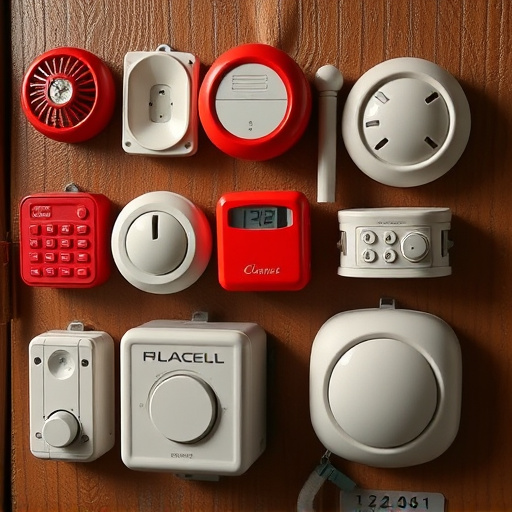Night walking safety relies on Personal Alarm Distance Range Comparison. Handheld alarms offer 50-800m range with loud sirens, while wearable alarms provide GPS tracking and automatic fall detection up to 100m. Choose a device with high decibel alarm, easy activation, and comprehensive range for optimal nighttime protection, especially in remote areas.
Night walking, though serene, presents unique risks. Enhance your safety with a personal alarm—a crucial device designed to deter harm and alert others. This comprehensive guide explores the world of emergency safety devices, focusing on their types, key features, and an in-depth distance range comparison chart. Understanding these elements is essential when choosing the right personal alarm for your needs, ensuring peace of mind during evening strolls.
- Understanding Night Walking Risks
- Types of Personal Safety Alarms
- Key Features to Consider
- Distance Range Comparison Chart
Understanding Night Walking Risks
Night walking, while offering a serene experience for some, presents unique risks that demand careful consideration. The reduced visibility can make it challenging to navigate unfamiliar paths, increasing the chances of accidents or encounters with potentially harmful elements. Moreover, being alone in the dark heightens personal safety concerns. Understanding these inherent risks is the first step towards making informed decisions about emergency safety devices.
When it comes to choosing a suitable device, one key factor stands out: the personal alarm distance range comparison. These alarms offer a powerful tool for self-defense and emergency communication. By assessing the range capabilities of different models, individuals can ensure they have a reliable means of signaling distress or attracting help when needed, be it from nearby neighbors or emergency services.
Types of Personal Safety Alarms
Personal safety alarms designed for night walking offer a range of features catering to different needs and preferences. These devices typically fall into two main categories: handheld and wearable. Handheld personal alarms are convenient for those who need a quick, portable option. They often feature a loud siren that can be activated manually or through motion sensors, ensuring help arrives promptly in case of an emergency. The typical range for these devices varies from 50 to 200 meters (164-656 feet), with some advanced models offering longer ranges up to 800 meters (2,624 feet).
Wearable personal safety alarms, such as bracelets or pendents, are designed for continuous protection. They can be equipped with GPS tracking, automatic fall detection, and emergency call buttons. The GPS functionality allows for accurate location sharing with loved ones or emergency services. While the range may not be as extensive as handheld models, with some wearable alarms offering up to 100 meters (328 feet), they provide constant peace of mind, especially during night walks in unfamiliar areas.
Key Features to Consider
When choosing emergency safety devices for night walking, there are several key features to consider. One of the most critical factors is the personal alarm distance range. This determines how far away help can be summoned in case of an emergency. Devices with a higher range offer more comprehensive coverage, especially in areas with limited visibility or accessibility.
Additionally, compare personal alarm distance ranges to ensure you get the protection you need. Some devices boast ranges up to 500 meters, providing peace of mind while navigating through secluded paths or remote locations. Features like loud, high-decibel alarms; automatic fall detection; and easy-to-use activation buttons are also essential for quick response times in emergencies. These advanced functionalities can make all the difference when seconds count.
Distance Range Comparison Chart
When selecting an emergency safety device for night walking, one crucial factor to consider is the personal alarm’s distance range. A comprehensive Personal Alarm Distance Range Comparison reveals varying capabilities among devices. Some offer a mere 20-30 meter reach, limiting their effectiveness in open spaces or urban environments where help may be farther away. Others boast impressive ranges of up to 80 meters or more, ensuring users can signal for assistance even from significant distances.
Understanding these differences is essential as it directly impacts the level of safety and protection provided during night walks. For instance, a device with an extended range allows wearers to maintain peace of mind while exploring remote trails or navigating unfamiliar neighborhoods. This personal alarm distance range comparison highlights the importance of choosing a device that aligns with individual needs, ensuring optimal safety measures for nighttime activities.
When venturing out alone at night, prioritizing safety is paramount. Incorporating a personal alarm with an adequate distance range into your routine can serve as a powerful deterrent against potential hazards. By understanding the risks of night walking and selecting the right device with essential features, you can enhance your peace of mind and ensure a safer experience. Refer to our comprehensive guide, including the detailed Personal Alarm Distance Range Comparison chart, to make an informed decision and choose the best emergency safety device for your needs.
